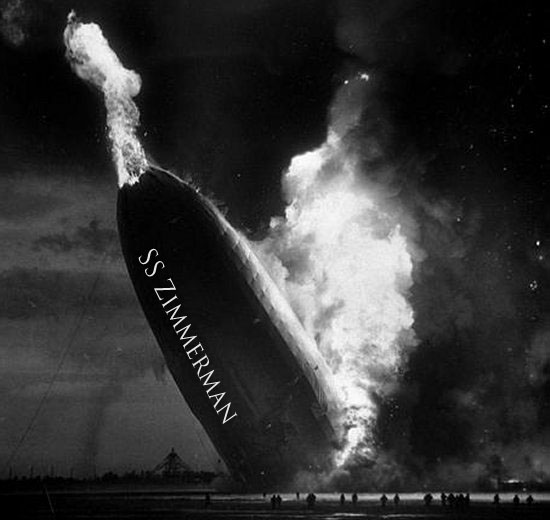 Faith & Science
Faith & Science
Did Zimmerman Argument Crash And Burn By Design Or By Chance?
 Responding to Zimmerman’s latest blog is almost too easy. All a response to this really requires is to post a few photos of clearly designed items that have had amazing, spectacularly bad problems. (The Hindenberg for instance. Or any Toyota apparently.) How stupid, yes I said stupid, do you have to be to equate bad design with no design?
Responding to Zimmerman’s latest blog is almost too easy. All a response to this really requires is to post a few photos of clearly designed items that have had amazing, spectacularly bad problems. (The Hindenberg for instance. Or any Toyota apparently.) How stupid, yes I said stupid, do you have to be to equate bad design with no design?
How is it that if the body is poorly designed, humans have risen to the pinnacle of life? If we were blind as bats say, would we have been better off? Would we have stumbled over the secret of time-travel by now?
Zimmerman’s argument is so weak as to be laughable. In fact, I had to stop my inelegant laughing so milk wouldn’t spew out my poorly designed nasal passage while I was reading his it-isn’t-testable-and-we’ve-tested-it-and-it-failed bit of junk-logic.
Beyond the obvious, and growing, problem that natural design is far from perfect, the concept of intelligent design also runs afoul of the scientific method. Simply put, ID offers no hypotheses that can be tested — the hallmark of scientific investigation.
The concept of irreducible complexity is even more problematic. Each example of a biological entity or process that has been advanced as being irreducibly complex has been found, after further investigation, to be understandable as a function of its constituent parts. Not surprisingly, as scientists focus their attention on complex structures, over time, they begin to make sense of what they see.
(Never mind that he grossly misrepresents Behe’s views, which, sadly, Behe is used to.)
From the desperate tone of confidence here it’s interesting to note that Zimmerman isn’t content with condemning ID as just bad science, for him it needs to be bad religion too? Why?
As they say, you don’t kick a dead dog.
